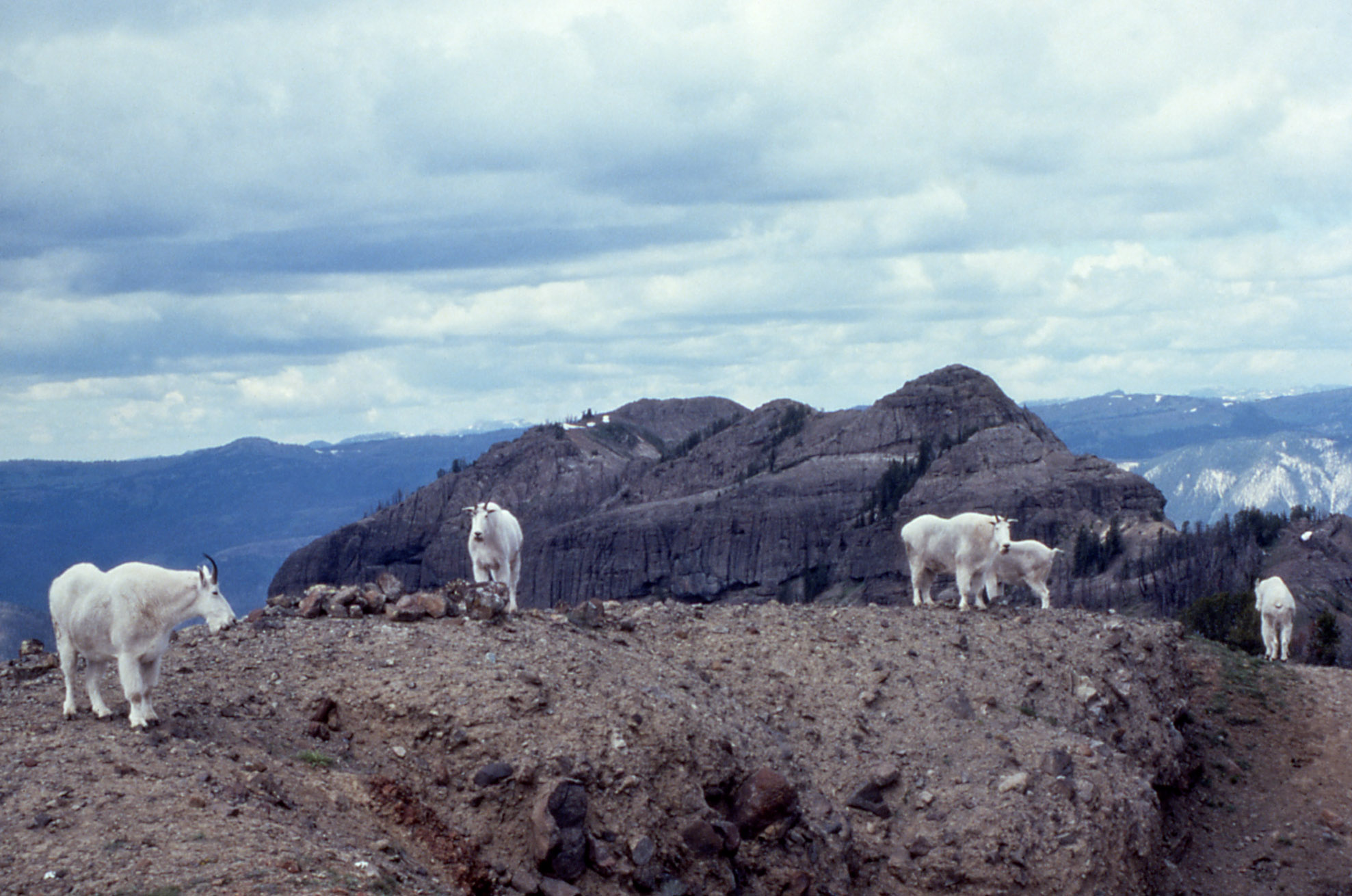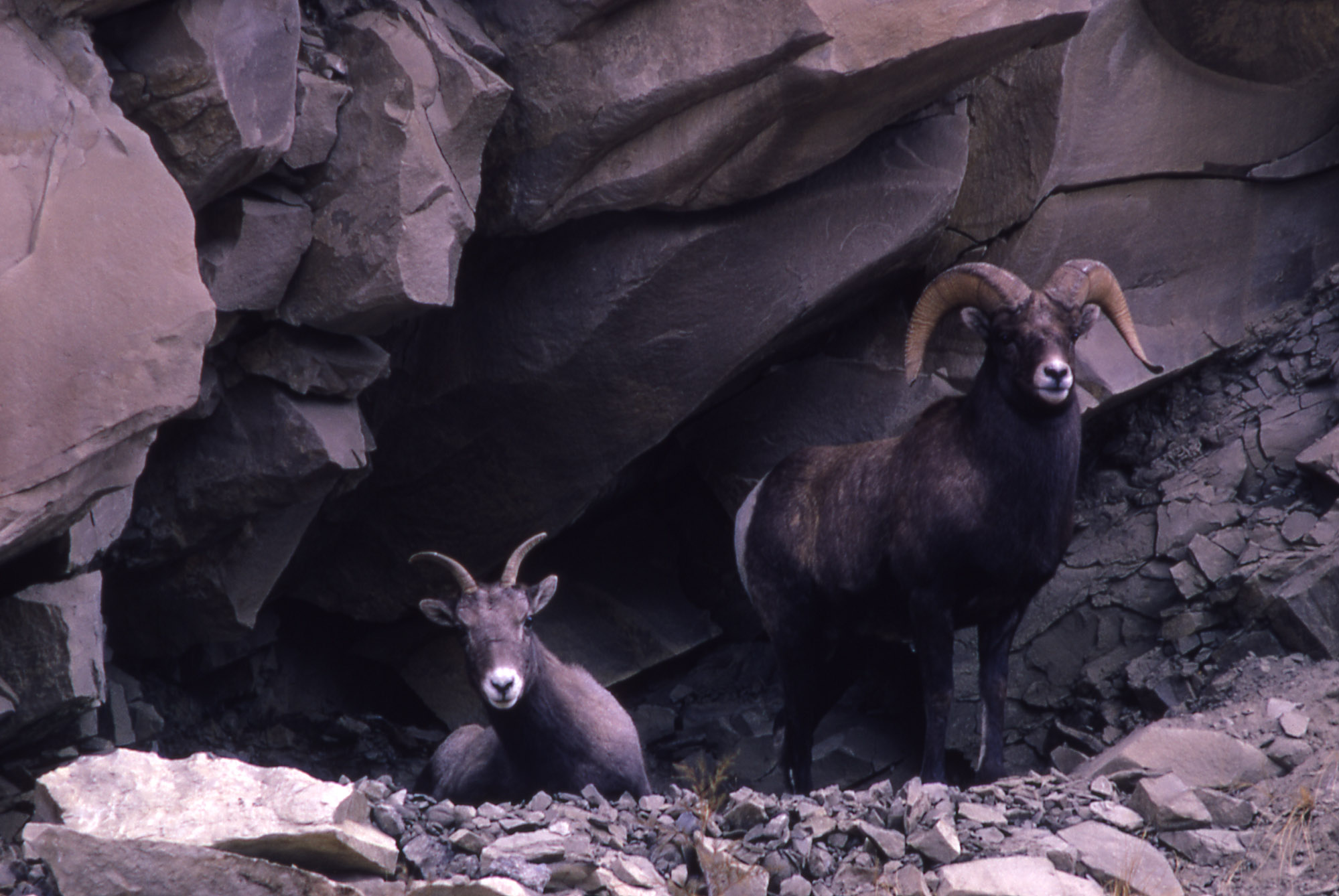Comparative Studies of Sympatric Bighorn Sheep and Mountain Goats in the Greater Yellowstone Ecosystem
Research

The Greater Yellowstone Ecosystem of Montana, Wyoming, and Idaho comprise an important region for bighorn sheep in North America. However, there has been a gradual increase in the abundance and distribution of non-native mountain goats in this region during five decades. High densities of mountain goats could negatively affect bighorn sheep because their ranges now overlap substantially. Also, the limited information available indicates potential for dietary overlap in some seasons and dominance of goats over sheep when foraging in the same areas, which suggests that bighorn sheep may be sensitive to inter-specific competition. In addition, bighorn sheep are well known for their sensitivity to a variety of diseases that can cause episodic die-offs that result in substantial population reductions. Though mountain goat populations do not appear to be susceptible to disease die-offs to any appreciable extent, mountain goats are effective hosts for a variety of parasites and pathogens that also infect bighorn sheep. Thus, information regarding potential competition, disease transfer, and/or displacement of bighorn sheep by mountain goats is a key issue for natural resource managers in this region.
Temperatures across western North America have shown a pronounced warming over the past 50 years and contribute to decreased snow levels and increased drought. Mountain ungulates may be sensitive to these changes in climate through influences on forage availability and quality in alpine and subalpine areas. For example, warmer temperatures could speed up the rate of snow melt and cause the wave of growing vegetation to occur at higher elevations than it would under cool conditions for corresponding times of the year. Also,the peak of forage quality (~30 days after snow melt) could occur over a narrower elevation band under a warmer climate than it would under otherwise similar but cooler conditions. In turn, these changes could influence the abundance of mountain ungulates, their migration patterns, the degree to which they transmit diseases, and the extent and outcome of competitive interactions.
Objectives
- Undertake an in-depth, scientific review of the current state of knowledge about mountain goats and bighorn sheep in the Greater Yellowstone Area, including (1) herd maps and demographic data, and (2) syntheses of competition (spatio-temporal overlap, diet overlap, behavioral interactions), movements and spatio-temporal distribution, disease/health, and metapopulation dynamics.
- Review and synthesize data on observed trends of climate variables, with a focus on temperature, snow pack, and vegetation phenology trends at select habitat sites for mountain goats and bighorn sheep in the Greater Yellowstone Area.
- Develop and implement recommended study plans for investigating broad-scale spatial patterns of bighorn sheep and mountain goat occupancy to identify areas of current and potential sympatry, evaluate and refine existing habitat suitability models, and provide foundational knowledge for understanding meta-population dynamics.
- Develop recommended study plans and sites for conducting comparative analyses of multiple sympatric bighorn sheep and mountain goat herds in the Greater Yellowstone Area, including competition, movements and spatio-temporal distribution, disease/health, and metapopulation dynamics.
- Develop recommendations for assessing the influence of landscape by climate interactions on bighorn sheep and mountain goat vital rates and movements and predicting effects of climate change on distribution and foraging behavior.
Collaborators

Montana State University – Bozeman
- Bob Garrott, Professor, Ecology Department
- Jay Rotella, Professor, Ecology Department
- Megan O'Reilly, M.S. Graduate Student
- Jesse Devoe, Lead Project Technician
- Mike Sawaya, Database Contractor
- Mike Zambon, GIS Contractor
National Park Service
- P.J. White, Yellowstone National Park, Mammoth, WY
- Sarah Dewey, Grand Teton National Park, Moose, WY
Wyoming Game and Fish Department
- Doug Brimeyer, Wildlife Biologist, Jackson Hole, WY
- Kevin Hurley, Bighorn Sheep Coordinator, Cody, WY
- Doug McWhirter, Wildlife Biologist, Cody, WY
Montana Fish Wildlife and Parks
- Julie Cunningham, Wildlife Biologist, Bozeman, MT
- Tom Lemke, Wildlife Biologist, Livingston, MT (retired)
- Karen Loveless,Wildlife Biologist, Livingston, MT
- Justin Paugh, Wildlife Biologist, Big Timber, MT
- Shawn Stewart, Wildlife Biologist, Red Lodge, MT
Idaho Department Fish and Game
- Hollie Miyasaki, Wildlife Biologist, Idaho Falls, ID
- Dale Toweill, Wildlife Program Coordinator, Boise, ID
U.S Forest Service
- Jody Canfield, Wildlife Biologist, Gallatin National Forest, Bozeman, MT
- Andrew Pils, Wildlife Biologist, Shoshone National Forest, Cody, WY
- Dan Tyers, Wildlife Biologist, Bozeman, MT
